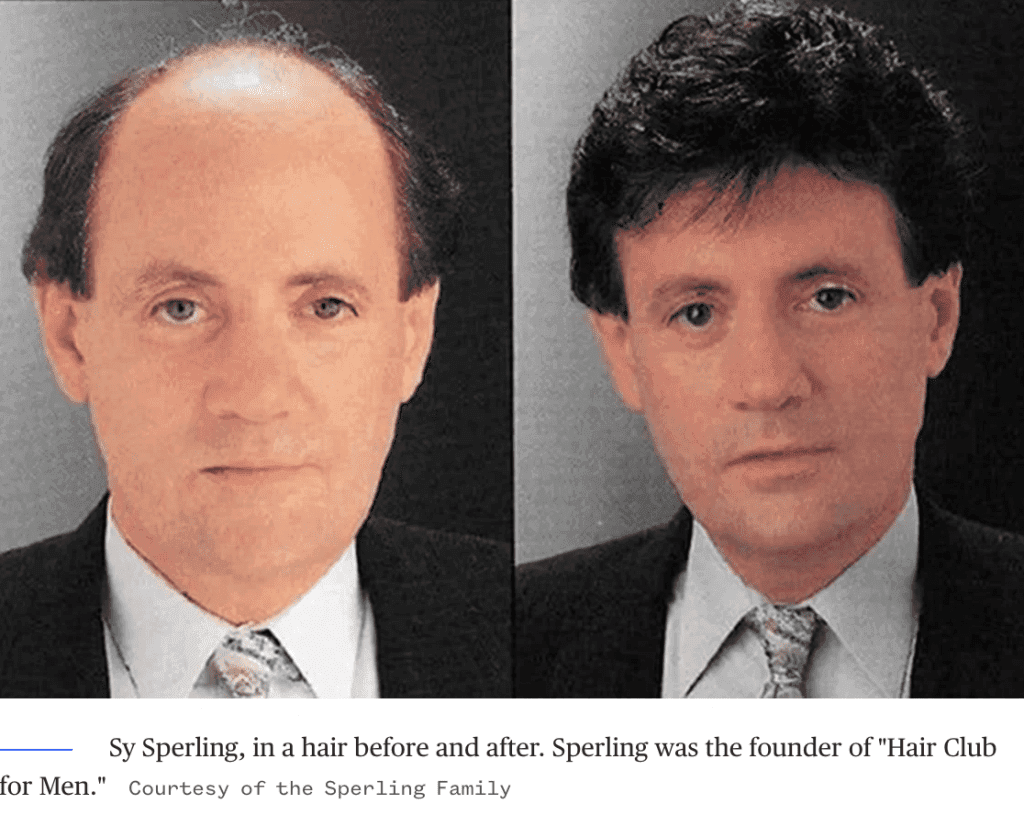Sit down. I want to tell you something.
A projected 2.8 billion people will lose their hair according to the Global Alopecia Market in 2016 - 2026. Count them all. 2.8 BILLION—that’s a lot of unhappy heads.
Is hair thinning the next global pandemic?
We’ll see. Let’s comb through the history of hair loss and the evolution of treatments that came before our time.
While 70% of men experience hair loss by age 50, up to 50% of women will lose massive amounts of hair by age 70+. We are not used to seeing females go bald. It can be a sign of aging or perhaps undergoing cancer treatment. What can we do about this?

For thousands of years, men and women have searched the world for solutions to hair loss. From serums to surgical treatments and wigs, the quest for luscious locks continues. Here is the history of hair loss.
44 BC
In ancient Rome, hair was a symbol of power and strength. Julius Caesar, Rome’s leader suffered from male-patterned baldness and sought a cure from various doctors. No lotions or potions worked. A cosmetic comb over along with wearing a wreath on his head seemed to be the only solution. As his empire continued to expand, the wreath soon became a symbol of power. Ironically, the Latin word “caesaries” translates to long, luxuriant hair.
1624

Wigs became wildly popular in France when King Louis XIII began wearing one to cover his thinning hair. Soon after his first wigged appearance at court, the upper class started wearing wigs, which soon began to symbolize wealth and power.
1800's

This period is known for hundreds of different hair loss cures that emerged on the market. Buyers were inundated with different remedies to try such as “Mrs. Allen’s World Hair Restorer,” “Ayers Hair Vigor (pictured above),” “Skookum Root Hair Growth,” “Imperial Hair Regenerator” and “Barry’s Tricopherous.”
1939

Japanese Dermatologist Dr. Shoji Okuda performed the first hair transplant in 1939. He used grafts to replace hair loss from the scalp, eyebrows, mustache, and pubic area. Shoji's advanced methods were largely unnoticed due to World War II and his ideas inspired Dermatologist Norman Orentreich to popularize “hair plugs” to treat baldness.

1968
Sy Sperling was a regular guy - divorced, depressed, and trying to get a date on a Saturday night. As he went bald, Sy told the New York Times it “destroyed my self-confidence – I was trying to establish myself in sales, trying to date again.” Sperling knew he had to do something about it and bought a hairpiece. Although he loved the way he looked, he wanted something more natural looking and by chance met a hair restorer who successfully weaved in real hairpieces around the edges of the bald area.
After that, Sperling decided to help others through the Hair Club for Men. It grew to become the largest hair replacement company in the world. A large proportion of his success was due to his television commercials where he says, “I’m not just the president, I’m also a client.”
2000-2005

In 2000, Dr. Bernstein and Columbia University came up with the revolutionary idea of hair cloning in pursuit of a long-term ‘cure’ for hair loss. Hair Cloning involves multiplying a person’s hair follicle cells in vitro and then implanting them into the scalp so that they grow new follicles and new permanent hair.

2022
During the 2022 Oscars, comedian Chris Rock made a joke about actress Jada Pinkett-Smith that spiraled out of control. He said, “Jada, I love you. G.I. Jane 2, can’t wait to see it.” Apparently, he wasn’t aware that she had alopecia areata, an autoimmune type of hair loss. Nor did he expect to be slapped by her husband Will Smith moments later.
The drumbeat of this event was heard by millions of people. I hope this misunderstanding sheds light on this painful condition and that more people are aware of what alopecia really is. It is an auto-immune disease where the body attacks its own hair follicles, causing hair loss anywhere on the body. It can start at any age. Sometimes hair can grow back with treatment and in other cases, there is no remedy.

On the nationally watched Tamron Hall TV show, the entire hour segment was on hair. Tamron opens the segment by saying that a few things are difficult to discuss including politics, religion, and hair. We all have a deep-rooted relationship with our hair on many levels. It communicates our age, health, and oftentimes our status. She shared that 50% of women will lose massive hair in their lifetime and are afraid to discuss it.
I know all of this can be hair-raising. We are not afraid to talk about it and offer you a compassionate ear to hear your story. If you suffer from hair loss, book a virtual Clarity Call with us. You’re only one conversation away from feeling better head-to-toe from the inside-out!
Citations:

